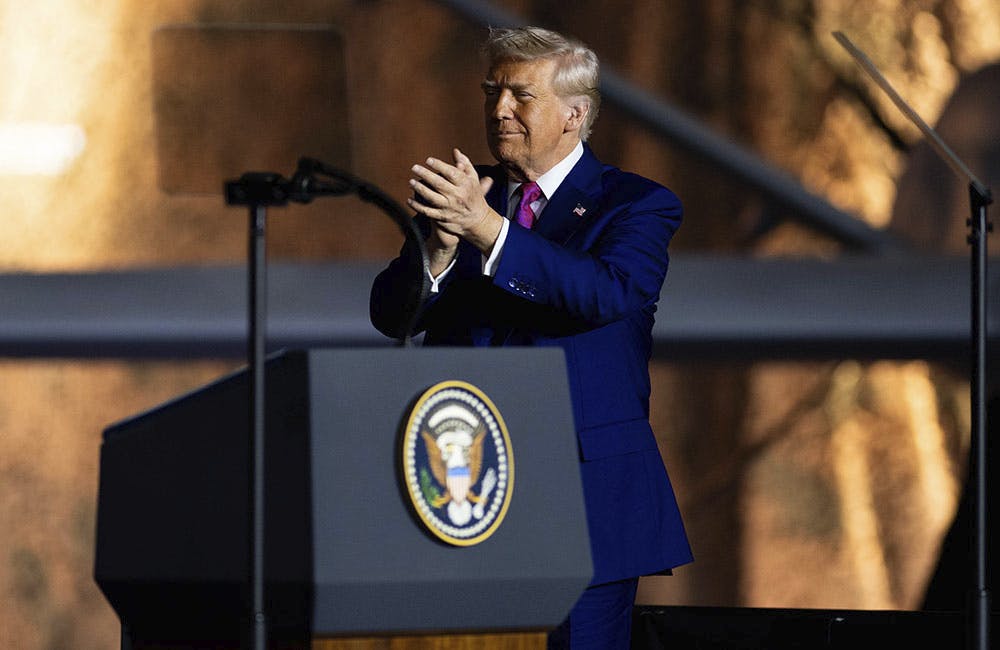Opinion: America’s Reindustrialization Must Be AI-Driven
The future of American industry built by artificial intelligence drives a need to upskill the workforce and leverage tariffs carefully.

When President Donald Trump announced reciprocal tariffs on April 2, what he called Liberation Day, the move drew swift backing from the United Auto Workers. For many in the rust belt, it stirred a familiar hope: that the shuttered factories dotting the American landscape might once again buzz with life.
But the vision of reindustrialization in the 21st century looks very different from the past. The future of American industry will not be built by the traditional factory worker — it will be powered by artificial intelligence and robotics.
Modern manufacturing plants will be largely automated, with minimal human labor on the floor. That doesn’t mean the end of jobs; it means the beginning of new ones in fields like AI, robotics and advanced systems integration — triggering an urgent need to upskill the American workforce for a radically different industrial era.
As the world moves deeper into the 21st century, the imperative for American reindustrialization has never been clearer. But this new wave of industrial resurgence will not resemble the old smokestack era. It will be intelligent, automated and data-driven. AI, with its ability to power smart factories, optimize supply chains and transform decision-making across every industrial function, stands at the heart of this new paradigm.
Reindustrialization must be seen as a strategic response to both global competition and internal economic fragmentation. As the U.S. seeks to compete with rising powers like China, simply restoring traditional manufacturing is insufficient. The future belongs to nations that fuse technology with production. AI isn’t just a productivity tool; it is the foundational technology that enables the creation of entirely new industrial architectures. This is why any conversation on tariffs and trade must be reframed within the broader context of building an AI-powered industrial base.
Tariffs Can Create Space for Reindustrialization
I have been an advocate of reindustrialization and onshoring since 2020. While my original thesis on reindustrialization did not advocate blanket protectionism, tariffs can play a catalytic role. Strategically deployed, they offer the U.S. economy a vital breathing space, an opportunity to build a new industrial base insulated, if temporarily, from relentless global price pressures.
However, tariffs are not a strategy in themselves. They must be part of a broader framework that transforms the very foundations of how America manufactures, innovates, and competes.
This is where history matters. We must recognize that innovation and industrial change do not unfold along predictable, ergodic paths. Instead, they evolve in non-ergodic, path-dependent ways shaped by history, institutions and unpredictable events. The idea that industries or technologies will naturally equilibrate or that market forces alone will guide us to the optimal outcome is a dangerous illusion.
In this context, tariffs can serve as a tool to interrupt failing trajectories and allow for the emergence of new industrial paths, especially when guided by strategic foresight and AI-enabled capabilities.
A Technology-Led Industrial Transformation
At the American Institute of Artificial Intelligence (AIAI), we have developed a framework that places AI at the center of this transformation. Reindustrialization, in this view, is not a return to the past — it is a leap forward into an economy where machines learn, systems adapt, and intelligence permeates every layer of production and governance. We see this as a full-spectrum national transformation initiative that incorporates:
- Advanced manufacturing using autonomous systems, robotics, and digital twins.
- AI-augmented design, testing and prototyping.
- Dynamic, decentralized supply chains with predictive analytics.
- Energy-efficient, sensor-driven production environments.
- Workforce development for high-cognition, AI-integrated roles.
These elements are not optional, they are essential. America must redesign its economic architecture to align with AI-enabled realities. This is not only about competitiveness; it is about sovereignty, resilience and national security.
Reindustrialization and the Investment Perspective
A central challenge is channeling capital toward high-impact, technology-integrated ventures.
As I argued in earlier writings, traditional investment models often ignore the non-ergodic nature of transformative innovation. AI, blockchain and quantum technologies do not develop along smooth curves. They evolve through punctuated, path-dependent changes influenced by initial conditions, institutions and enabling technologies.
Therefore, investors must look beyond surface-level hype cycles and analyze how innovations align with deeper scientific and systemic shifts. Smart capital allocation requires epistemological awareness — understanding how knowledge itself is evolving — and must track both the path and the potential of technologies. This is the only way to ensure that reindustrialization is not just funded, but truly realized.
The Stakes and the Opportunity
Government agencies should realize reindustrialization is not merely an economic policy, but a national transformation project. Tariffs may create a window of opportunity, but only an AI-led strategy can capitalize on it. The risk is not in using tariffs — it is in wasting the space they create.
The next industrial age is underway. America must decide whether it will lead that future or be shaped by those who do.
This is a carousel with manually rotating slides. Use Next and Previous buttons to navigate or jump to a slide with the slide dots
-

CIA's Future Relies on Human-AI Collaboration, CAIO Says
From data triage to agentic AI, Lakshmi Raman details how human expertise remains paramount for national security applications.
3m read -

AWS Summit: NIST Secures High-Performance Computing Against Evolving Threats
NIST’s Yang Guo reveals the broad attack surface of high-performance computing and explains developing guidance and future-proofing security strategies.
9m watch -

Trump Overhauls Federal Cybersecurity with New Executive Order
The new directive aims to strengthen digital defenses while rolling back "burdensome" software requirements and refocusing AI security.
3m read -

DOE Accelerates AI Research to Defend Critical Infrastructure
The Energy Department and its national labs are increasing partnerships to advance AI research, scale new tools and boost national security.
3m read








